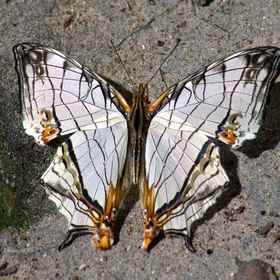GHNP is home to a number of threatened species of global concern, providing them with habitats critical to their continued survival. Extremely vulnerable pheasant and large mammal species are among the animals and plants that find refuge in the GHNP. The Park has distinct regions and ecosystems needed to sustain the ecological integrity and lasting conservation of the Park’s exceptional diversity. The Park supports probably self-sustaining populations of the following IUCN listed near-threatened, vulnerable and endangered species: Leopard, Himalayan Black Bear, Royle’s vole, Himalayan Tahr, Himalayan Serow, Himalayan Goral, Himalayan Musk deer, Western Tragopan and Cheer pheasant. The endangered Snow Leopard and critically endangered Red-headed vulture also are present. The Park contains the largest single population of the vulnerable Western Tragopan and supports probably the densest remaining population of Himalayan Musk Deer west of Nepal.

Western Tragopan (Male), State Bird of HP

Snow Leopard GHNP, State Animal of HP 3,700 m and above
Among birds, the Park is well known as the most important locality in India for the endangered Western Tragopan. Four other species of pheasant occur in or adjacent to the Park, the one most likely to be seen by visitors is the Himalayan Monal, an abundant bird in the higher forests, although rather shy. Raptors are also a prominent feature of the Park, with Lammergeiers, Himalayan Griffon Vultures, and Golden Eagles being seen regularly. A great variety of other birds occurs, some of which reach their western limit in the Park.
The flora of GHNP shows affinities with Mediterranean, Tibetan, and the Peninsular Indian region. For example, species of Valerians, Dactylorhiza, Yew, and Leycesteria are typical taxa which extend to Afghanistan and west China. Other affinities that are met with here are in form of buckthorn (Hippophae) of palaearctic region; Cedar trees, herbaceous Violets, and grasses such as Poa of Mediterranean region; and spurge (Euphorbia) shrubs of Peninsular India. In addition, GHNP has a number of endemic species of Himalayas, for example several species of balsams (Impatiens), species of Androsace, Hedysarum, Draba (Whitlow grass),etc.
In addition to supporting these vulnerable and endangered species, the Park includes examples of unmodified low-altitude (less then 2,500 m) West Himalayan broad-leaved and coniferous forests with intact understory vegetation, supporting a high diversity of typical bird and mammal species. These assemblies of plants and animals represent functioning ecosystems once characteristic of large areas in the Himalayan front-ranges but now hugely reduced by conversion to temperate agriculture or commercial rotation forests.










